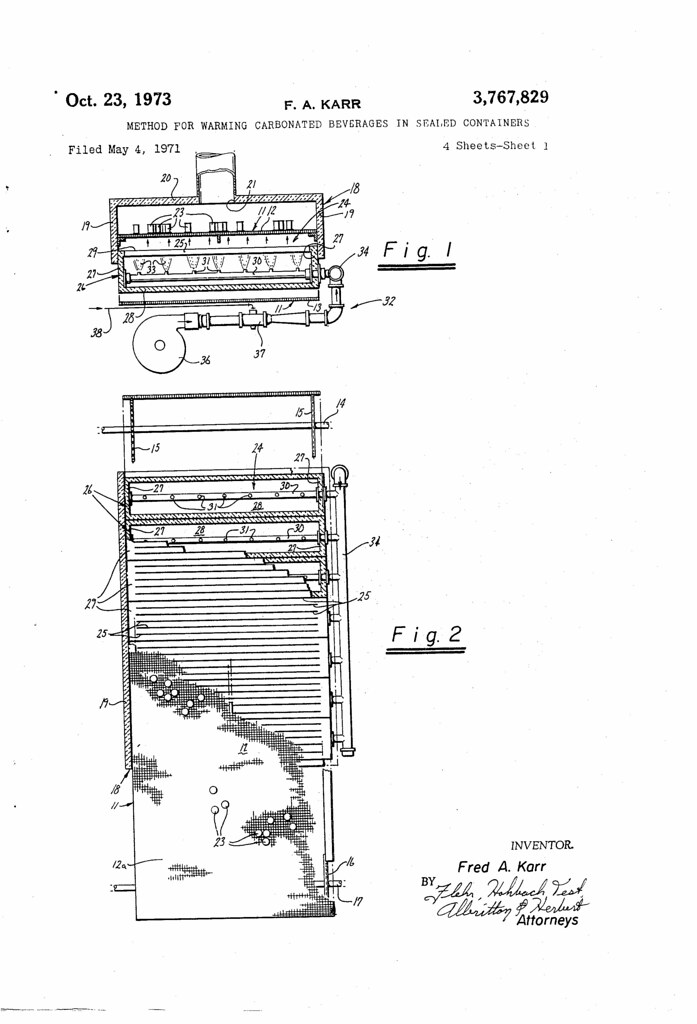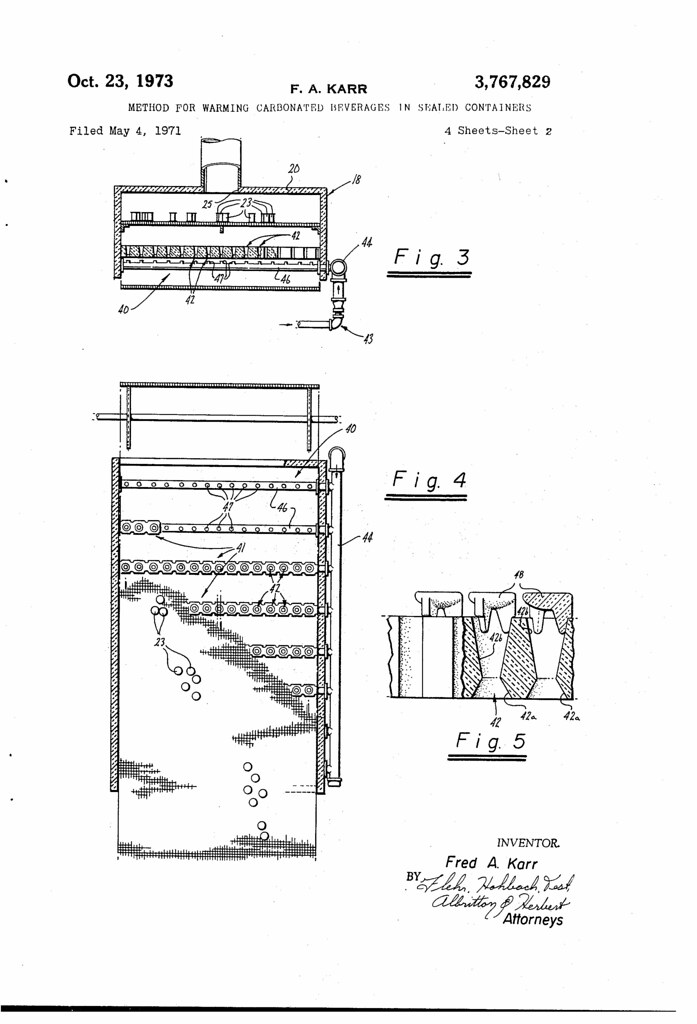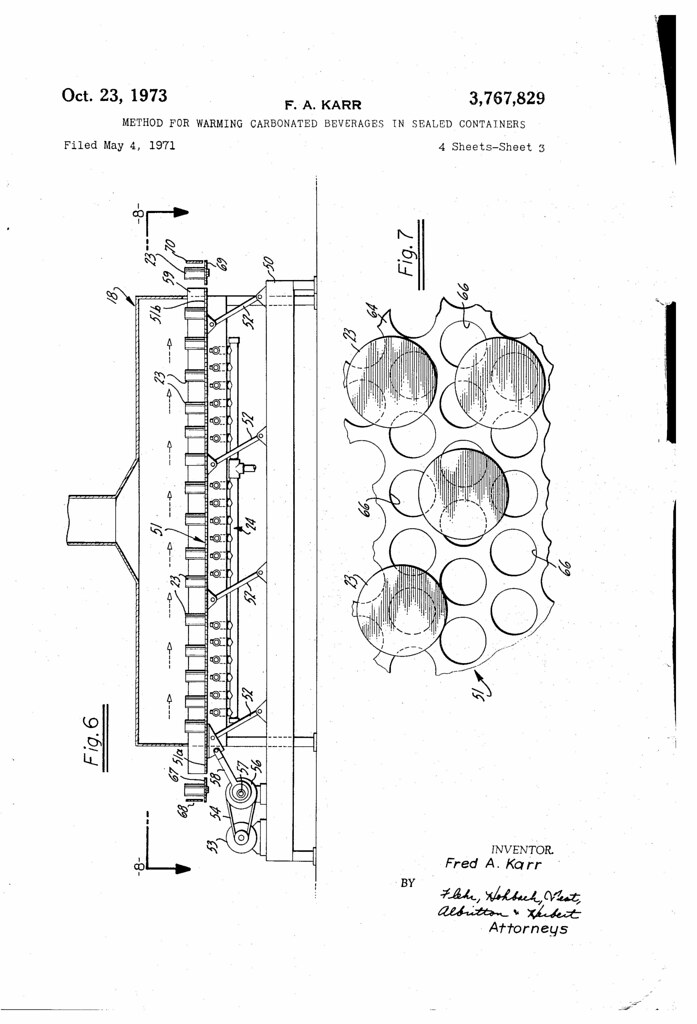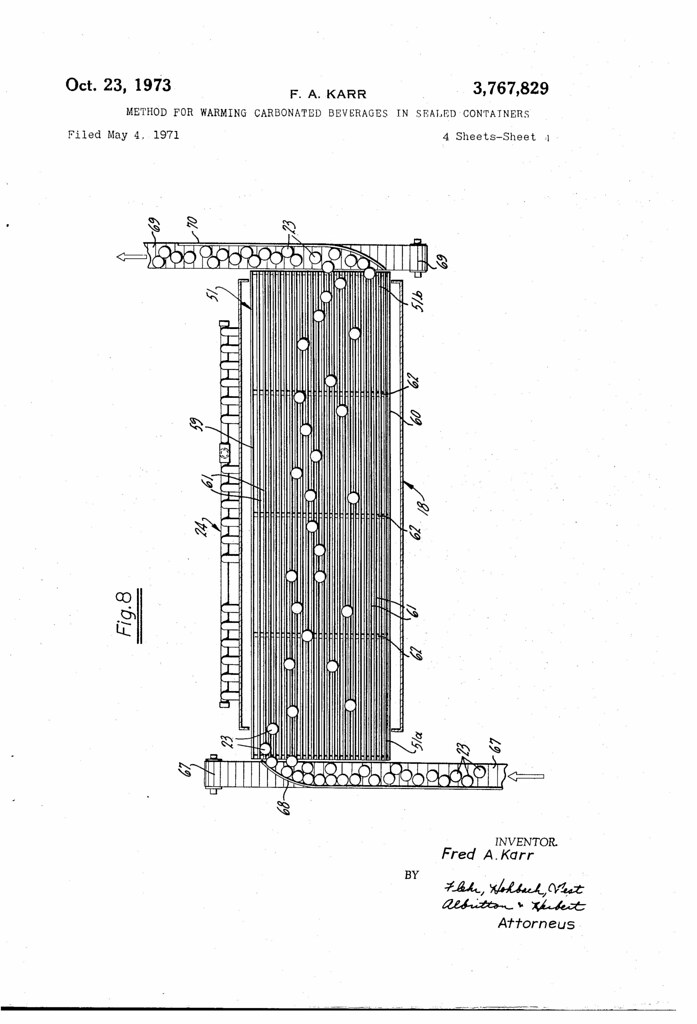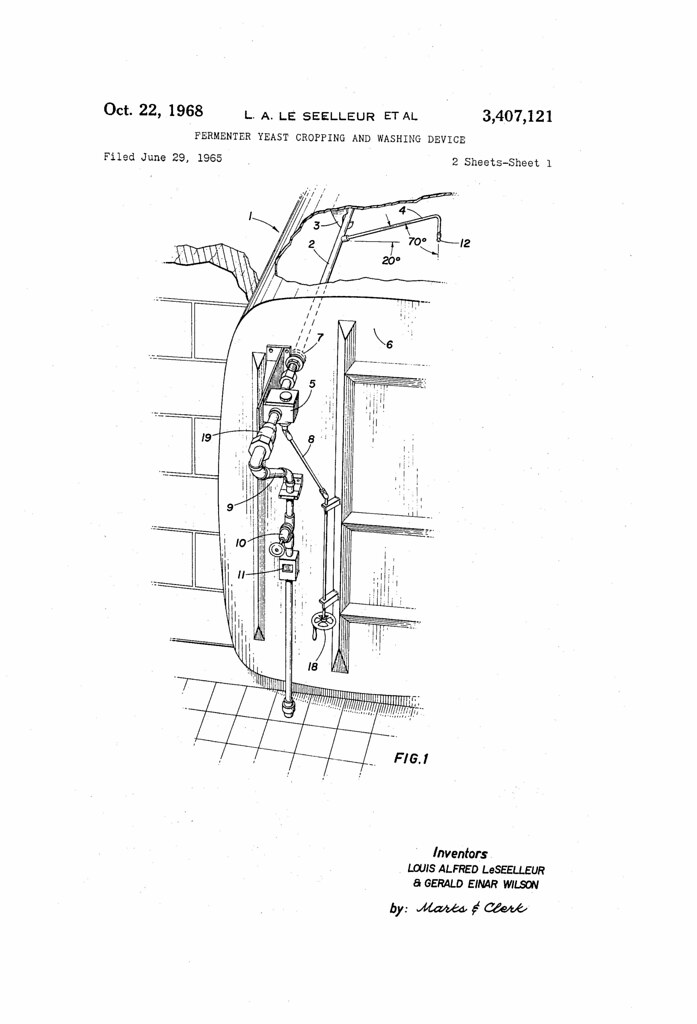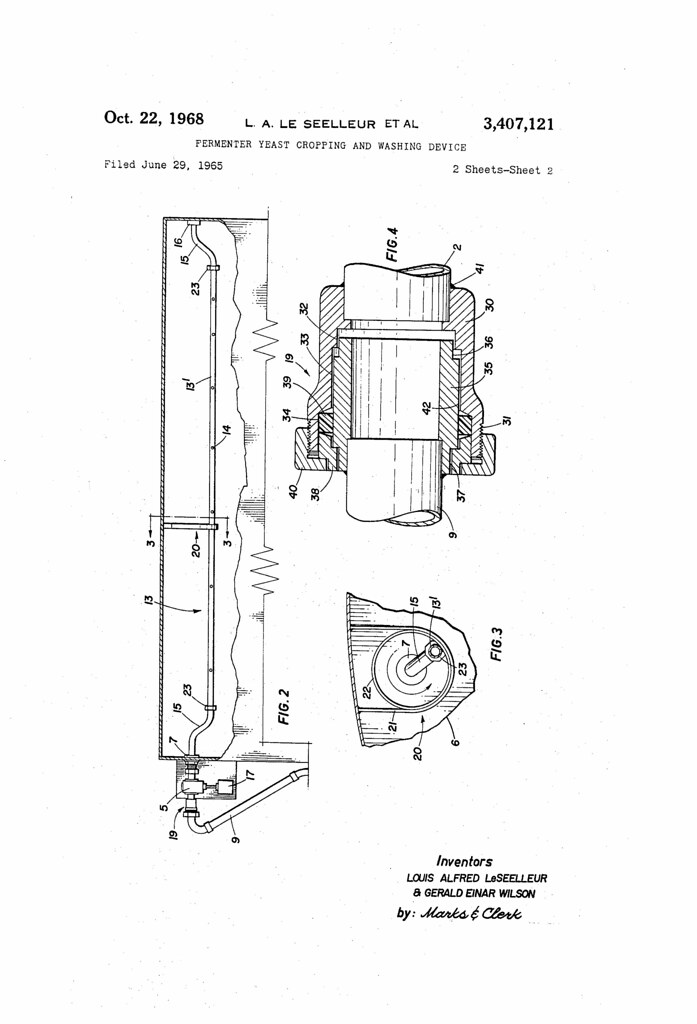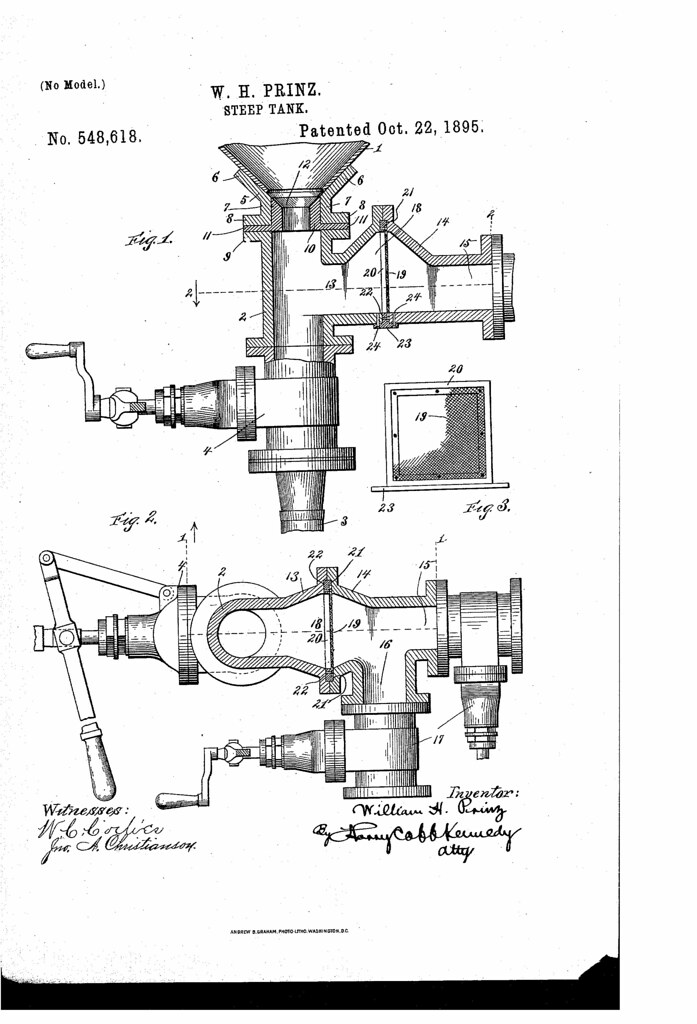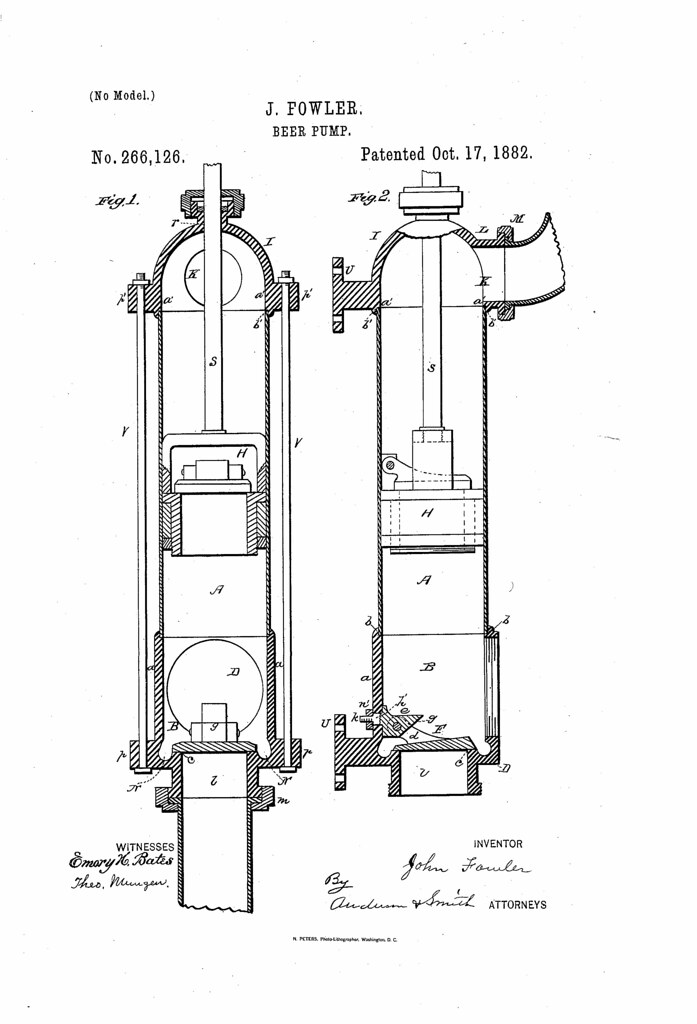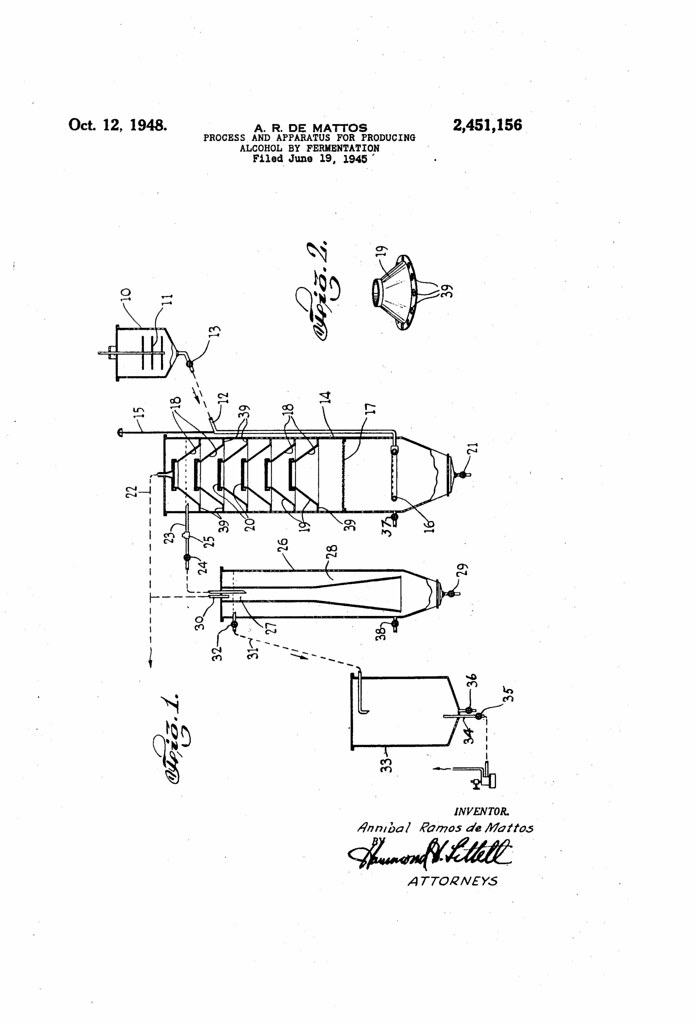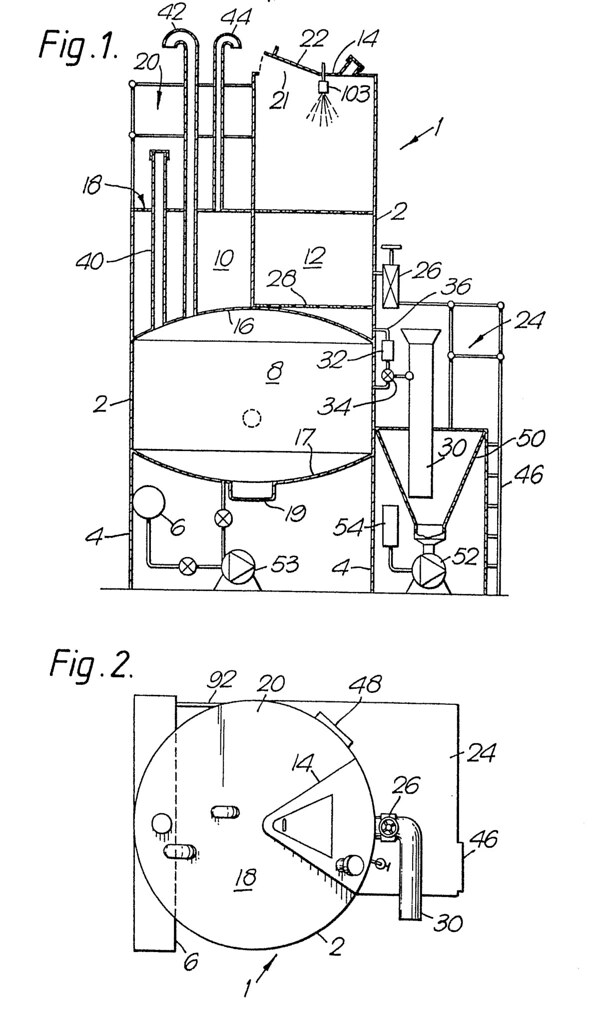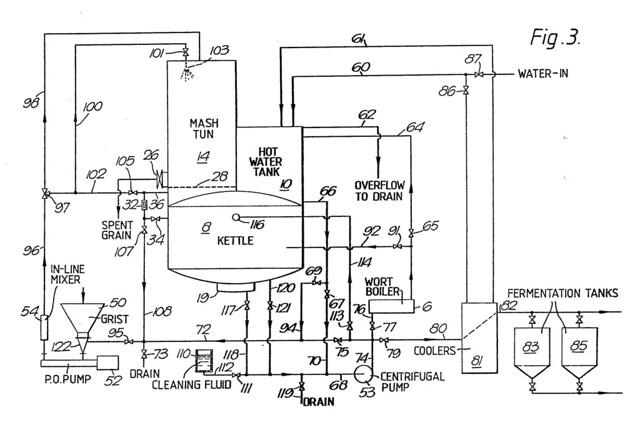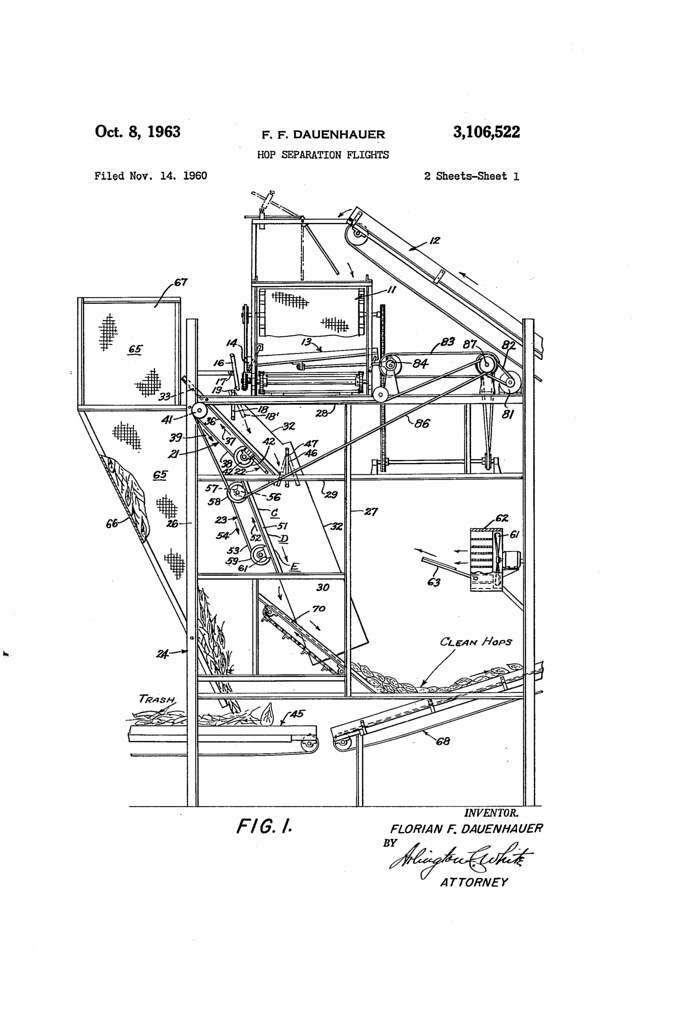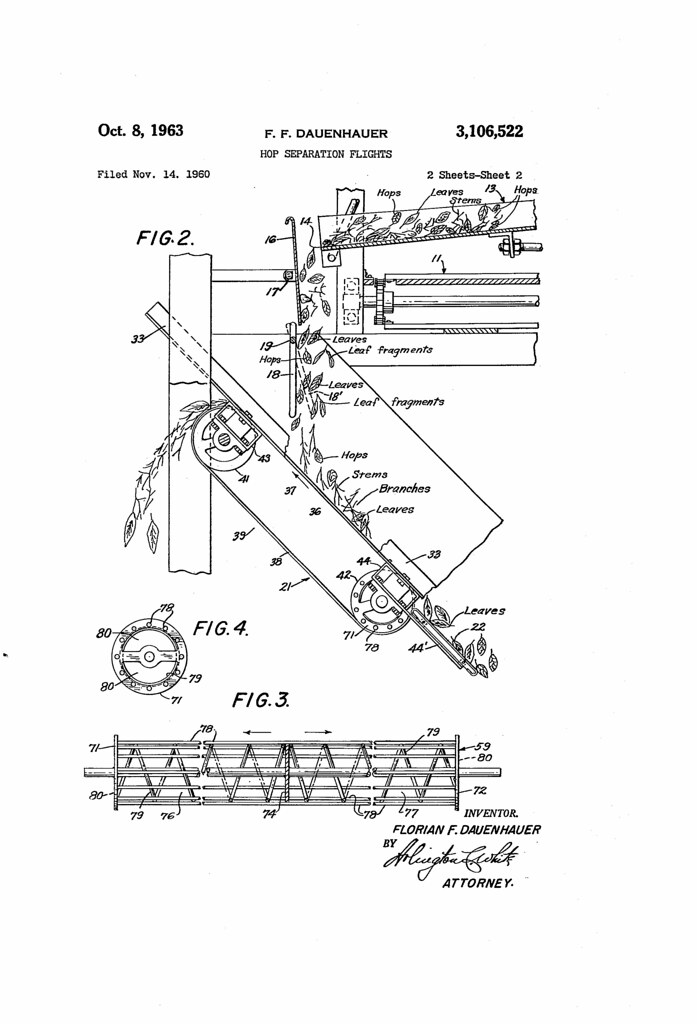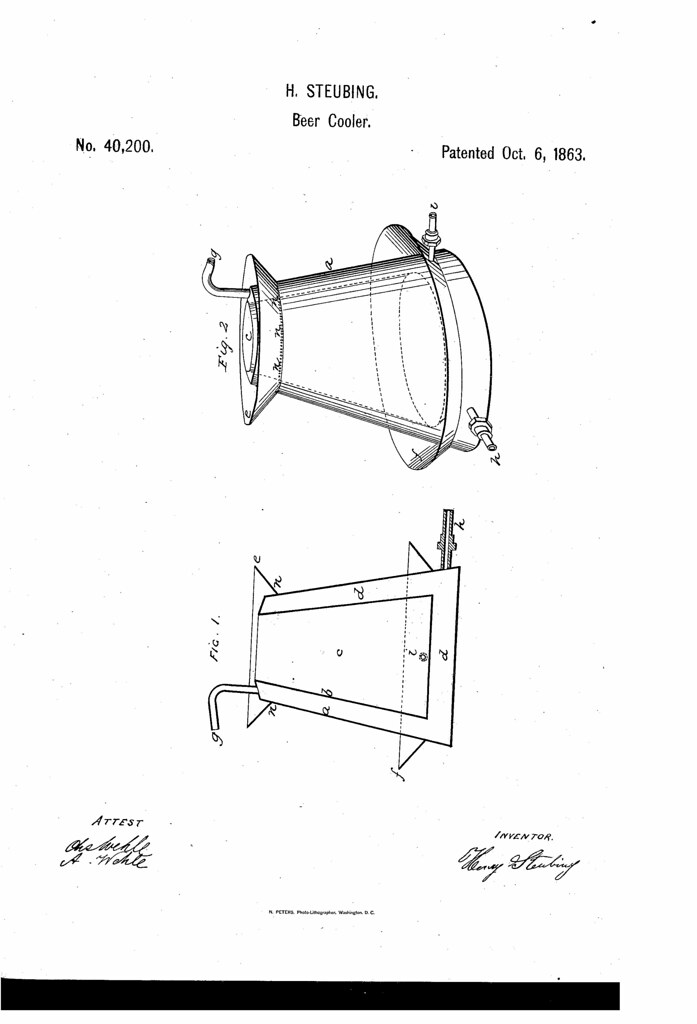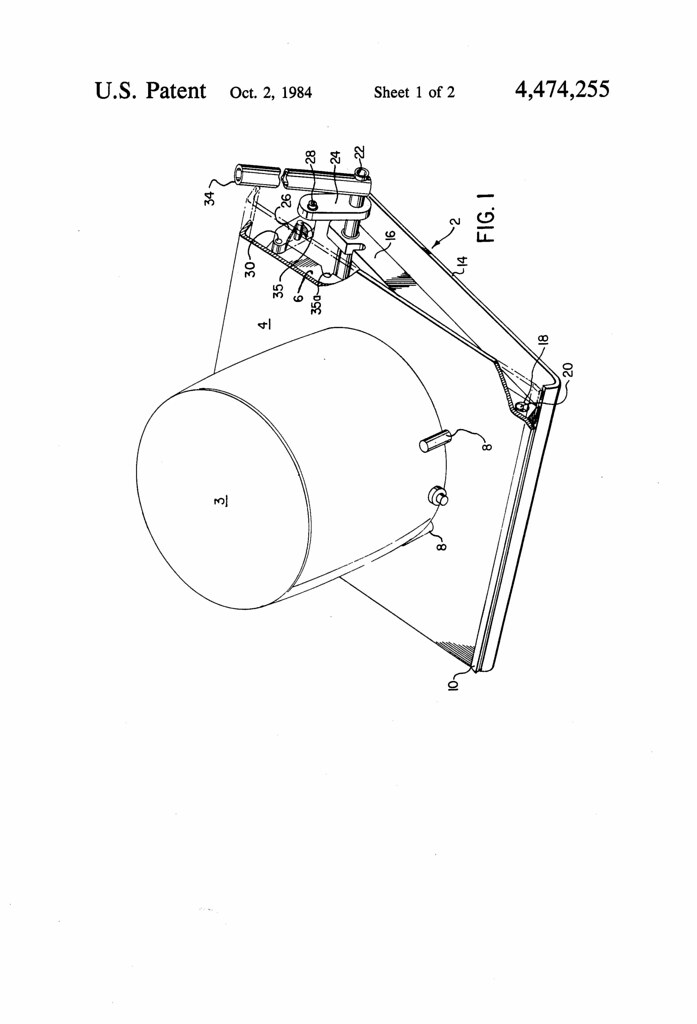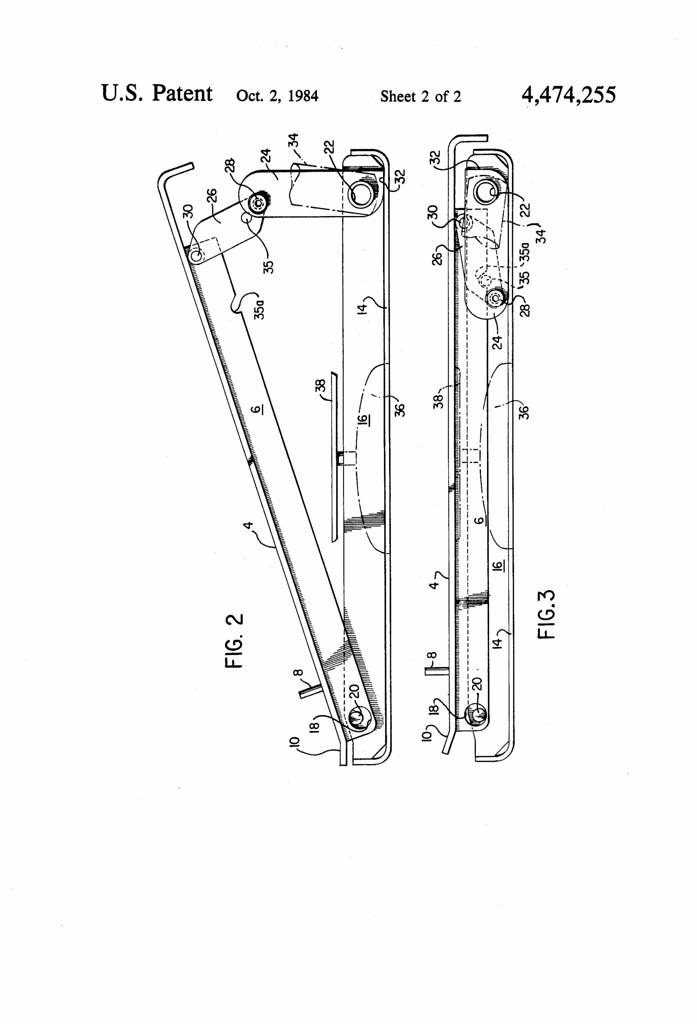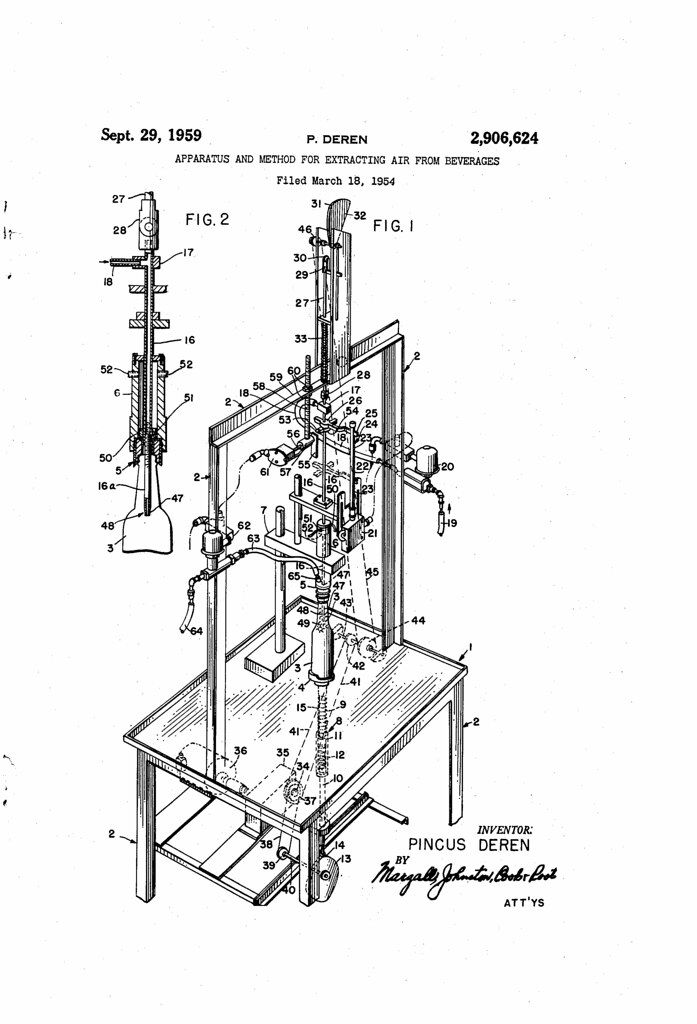
Today in 1973, US Patent 3767829 A was issued, an invention of Fred A. Karr, for his “Method for Warming Carbonated Beverages in Sealed Containers.” There’s no Abstract, although in the description it includes these claims:
A method and apparatus are provided for continuously heating to ambient temperatures the contents of a plurality of sealed containers (e.g. bottles or cans) filled with carbonated beverage (e.g. beer and carbonated soft drinks). The method is useful as applied to containers freshly filled with cold carbonated beverage to avoid the formation of condensation on the containers. The method is also applicable to heating a beverage to pasteurizing temperatures from either cold filling or room temperature.
One embodiment of the apparatus include a conveyor formed of an endless perforate heat-resistive conveyor having upper and lower runs, and an elongated open-bottomed tunnel oven disposed above said upper run having side walls adapted to retain beverage containers carried by said upper run. Elongated stationary, dry-heating means disposed between upper and lower conveyor runs below the oven means are provided to supply a plurality of beverage containers to the upstream end of said upper run for movement through said oven. In this manner, the underside of the beverage containers are preferentially heated. Control means are associated with the heating means capable of adjusting the heat intensity along the container path of travel. One embodiment of the dry heater means includes a plurality of infrared heater elements transverse to the direction of travel of the conveyor with each element including an upper heat radiating surface and air-fuel gas mixture feed. Another embodiment of the dry heating means includes a plurality of spaced apart rows of open-flame natural draft burners capable of impinging upon the underside of the beverage containers.
In another embodiment of the apparatus, the conveyor is of vibratory type. The upstream end of the deck of the vibratory conveyor is disposed proximate and transverse to an infeed conveyor and the discharge end of the deck is proximate and transverse to a discharge conveyor so that the containers are conveyed directly to and from the conveyor deck without the interposition of a deadplate.
According to the process, the sealed containers filled with carbonated beverages are moved on a conveyor of one of the above types over a dry heat source so that the dry heat emitted therefrom impinges upon the underside of the containers to heat the carbonated beverage therein in progression proceeding from the bottom toward the top of the containers so that an elevation of the temperature of the beverage is induced while permitting the head space to remain relatively cool. Heating the beverage before the gaseous head space reduces the danger of superheating the gaseous head space and also eliminates the requirement of transmitting heat through the poorly-conductive gaseous head space in order to warm the beverage. The containers on a vibratory conveyor are vibrated sufficiently to increase heat transfer by convection from the bottom toward the top of the container.
In general, it is an object of the present invention to provide a method and apparatus for warming carbonated beverage in containers of either the glass bottle or metal can type to avoid the formation of condensation on the containers.
It is another object of the invention to provide a method and apparatus elevating the temperature of beer in a container of the above type to a value at which pasteurization can occur and which also overcomes the disadvantages of the prior art.
